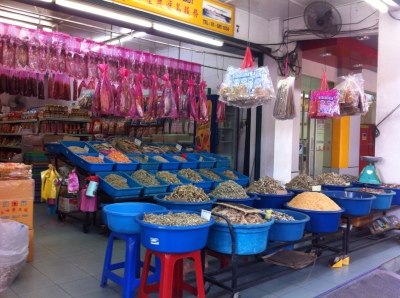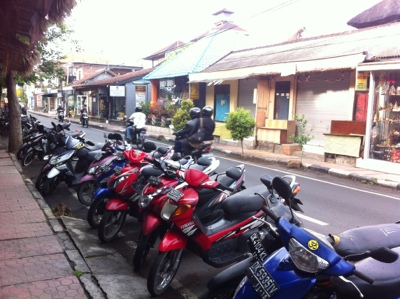Melaka: UNESCO World Heritage City
Two days in Melaka (aka Malacca). So much to see and learn; I know I won't do it justice here, so I think I'll divide it up into two posts: one on the food and one on the unique history and culture.
Melaka is an important place in Malaysian history. It was an international port city for hundreds of years, bringing Chinese merchants, Portuguese, Dutch, and British colonizers, and even the Japanese during World War II. It became independent in the mid 1900s and joined with other states to become part of the Malayan Union and later Malaysia (source, Wikipedia).
There are two main parts to Melaka City– old Melaka and new Melaka. New Melaka has malls, boutiques, shops, restaurants. It's where the young generation generally seems to hang out to get their pop culture fixes through movies, music, and clothing.
Old Melaka has been preserved to maintain an historical feel, mostly for the benefit of cultural preservation and for tourism. It's a beautiful part of the city.
Melaka River runs through Melaka City, and it gives the city a feel of a Southeast Asian Venice. There's a boardwalk that follows the river with views of murals on the buildings and a mix of hotels, guesthouses, and personal homes. I didn't walk it at night because 1) mosquitoes are killers here and come out as soon as the sun starts to consider setting and 2) I didn't really want to be out by myself at night– to avoid people and rats. 🙂 But there are lots of twinkle lights and night lights, so I imagine it would be a nice romantic walk if you can withstand the mosquitoes! There's also a river boat that goes up and down the river, like the Venice gondolas, I suppose, but much louder. I didn't take it, but it seems it might be a fun touristy thing to do.
An important aspect of the cultural history in Melaka is a group of people called the “Baba-Nyonya” or Peranakan Chinese. These are people who have descended from Chinese men who came to the areas of Malaysia and Indonesia (before they became those countries) during the 15th and 16th centuries, settled, and intermarried with the local Malay women. The term “Baba-Nyonya” refers to the two different ethnicities– “baba” is Chinese for “man” or “father” and “nyonya” is an old Malay word meaning “lady” or “grandma.” So this became a very unique and particular fusion culture, including clothes, food, wares, furniture, etc.
The Baba-Nyonya became very wealthy– I'm not exactly sure why. It seems they had loyalties to the colonizers who helped them become very wealthy businessmen. And many of them lived on one of the main streets in old Melaka: Jalan Tun Tan Cheng Lock (also referred to as Heeren Street, a la Dutch colonizers, or “Millionaire's Row” because of all the wealthy families that live(d) on this street.
Melaka isn't the only place where these Baba-Nyonya have resided, but it seems to be one of the best preserved and most known in this area. In old Melaka, there are homes that have been preserved as museums and eateries where they serve Nyonya food.
Because of the city has been declared a World Heritage City, many artists have relocated here, both Malaysians and expats, to set up galleries and workshops. I met a few artists and learned a bit about Melaka through their eyes:
- Martin Wood is a Peranakan– half Chinese, half Scottish/ English artist who paints landscapes. He shared with me how he was developing and changing his style as an artist, moving from oil paintings that were more based in realism and impressionism to acrylic in a cubist style. I didn't take any photos in his gallery, but here's an image I got off googleimages.
- Soobin Park is a Korean artist who relocated to Melaka about 6 years ago, drawn by the culture, beauty, and weather, she said! We spoken in Korean (I'm always amazed how I can pull comprehension and speaking ability out of thin air if forced– although I don't understand 100% of what she said…). She has painted paper cranes historically and since moving to Melaka has started painting more Malaysian icons– flowers, etc. It was really nice to chat with her, and I think she found it nice to meet a Korean-American traveler. She gave me a booklet of her works, and we took photos of each other.
Some other memorable sights I came across in Melaka were
- Bukit Cina— supposedly the biggest Chinese cemetery outside of China. It's basically a series of hills, and there are graves built all over the hills, with some headstones being more elaborate than others. People use it as a jogging or walking area because there's no traffic and it's quite green and a good workout. It seems like it would be a peaceful resting place, overlooking Melaka. Much different from the orderly cemeteries of the U.S. and Europe.

I wasn't able to get photos off my camera of the cemetery, but I took this with my iPhone, so it will have to do.
- the trishaws driven by men all over the city. I didn't ride any, but they were fun to look at with all their floral decorations and some blasting cheesy Malaysian music. It looked like fun to ride it at a leisurely pace around the city.
- the Baba and Nyonya Heritage Museum— there was a 10 MYR fee but it was totally worth it. They have tours every so often, and that's worth it, too. My tour guide was Sabrina. We weren't allowed to take photos of the museum, which is still owned by a Baba Nyonya family, descended many generations. It's beautiful, and they've preserved it fairly well. The tour guide was funny, and she interjected some fun jokes here and there, which I don't know if everyone got. But I felt it was 10 ringgit well spent.

Photo from googleimages since I wasn't able to take photos inside. This is one of the courtyard areas.
- St. Paul's Hill and Church. This was a church that was originally built when the Portuguese were in Melaka in the 1500s. Then when the Dutch came, the reconsecrated the church for their use in the 16-1700s. It was then used for fortification by the Dutch and later the British in the 1800s. Over time, it just broke down, and this is what is left. It's quite a beautiful set of ruins, with no roof and windows open to the world. I met an artist inside the ruins whose work was quite beautiful, and I bought a few pieces to support him in his endeavors.
- Jonker Street, the main street for shops and eateries in old Melaka. Lots to see and do. I heard there's a cool night market on weekends when it's crazy crowded. I didn't think I was missing a lot by not being there for the night market. But there were quite a number of tourists even on the weekdays when I was there. Enough people for me!
- Murals on the buildings on the Melaka river walkway. Some really vivid and beautiful. I wish I had someone to explain their meaning to me. But they were beautiful just the same.
There were other sights in Melaka that were fine to see– forts, old Dutch and Portuguese buildings, museums– but I'd say the above were the most interesting for me. And it was all walkable. I didn't need a taxi or trishaw. I was even able to walk over to new Melaka without any trouble.





































